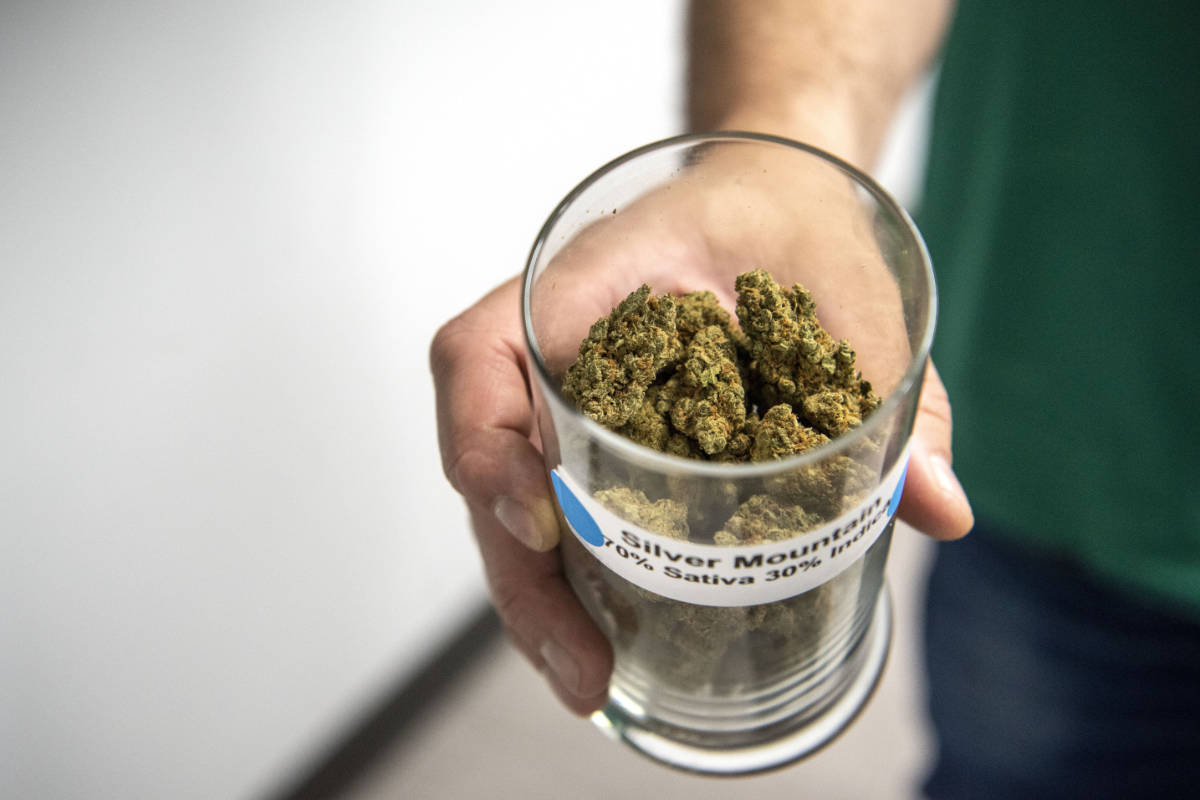The following piece comes from our sister publication, SFEvergreen.
Until around a decade ago, tetrahydrocannabinol (THC) was the only cannabinoid most people knew about. When cannabidiol (CBD) arrived on the scene, however, a new world of alternative cannabinoids opened up, and the world started viewing Cannabis sativa from a more evolved perspective.
These days, a whole slew of additional cannabinoids have made their way into the consumer market, forcing us to consider their potential interactions. According to prominent cannabis researchers, the “entourage” of minor cannabinoids that follow CBD and THC might unlock the mysterious benefits of this ancient healing plant.
INTRODUCTION TO THE ENDOCANNABINOID SYSTEM
The human body naturally contains neurotransmitters like anandamide that are called endocannabinoids because they behave similarly to cannabinoids. These neurotransmitters bond with the nervous system’s CB1 and CB2 neuroreceptors, which provide a variety of vital regulatory functions throughout the body. Together, these neurotransmitters and neuroreceptors form the endocannabinoid system.
When you ingest THC, this cannabinoid kicks your CB1 and CB2 receptors into high gear, resulting in a state of intoxication. Research suggests that CBD might moderate these intoxicating effects, and each of the other non-intoxicating cannabinoids, such as cannabigerol (CBG), cannabinol (CBN), and cannabichromene (CBC), appear to play important roles as well. The endocannabinoid system is far-reaching and complex, and it appears to only operate at its peak when multiple cannabinoids are ingested at once.
CANNABINOIDS WORK BETTER TOGETHER
During the early days of CBD research, scientists struggled to understand why this cannabinoid appeared to reach peak potency at a certain dose. It was only when CBD was paired with other non-intoxicating cannabinoids that this peak potency was overcome, providing one of the first clues suggesting that cannabinoids work better together.
As the international cannabis research community learned more about each of the cannabinoids, it became clearer why these substances appear to synergize with each other so effectively. While CBD appears to be a highly effective anti-inflammatory substance, for instance, it doesn’t seem to have any considerable antibacterial qualities. CBG, on the other hand, appears to fight back against bacteria with ease. Similarly, CBN appears to make up for CBD’s lack of appetite-stimulating qualities, allowing these cannabinoids to mimic THC’s anti-inflammatory and appetite-stimulating qualities when used together.
Since each cannabinoid has a unique, important role to play, no single cannabinoid can provide everything you’re looking for when you use Cannabis sativa. Combined, however, the various cannabinoids present in hemp and cannabis appear to synergistically improve your health in practically every conceivable way.
AN ENTOURAGE OF SYNERGISTIC CANNABINOIDS
To help describe the apparent synergy between different cannabinoids, cannabis scientists started referring to this phenomenon as the “entourage effect.” Whether it’s THC, CBD, or CBG, each Cannabis sativa strain has a dominant cannabinoid that’s accompanied by an entourage of minor cannabinoids.
While the roles that minor cannabinoids play aren’t small, their physical concentrations are. In most cannabis strains, each minor cannabinoid makes up a tiny portion of the overall cannabinoid concentration. Regardless, these low-concentration cannabinoids appear to interact with a strain’s dominant cannabinoid to alter and improve that cannabinoid’s beneficial effects.
At this point, there’s plenty of scientific evidence that the entourage effect offers concrete benefits. Aside from the clinical and preclinical research that’s been conducted into this phenomenon, however, there’s plenty of anecdotal evidence that backs up the benefits of the entourage effect as well.
People who use Cannabis sativa products containing more than one cannabinoid routinely report stronger and more balanced effects. CBD is reported to become more potent, for instance, when it is combined with other cannabinoids, and THC users report that using this intoxicating cannabinoid in tandem with CBD, CBG, or CBN reduces its less desirable effects. Based on all the available evidence, it certainly appears that cannabinoids only reach their peak potential when they’re kept together.
WHY BROAD-SPECTRUM AND FULL-SPECTRUM CBD ARE BETTER
Unfortunately, cannabinoids that should be kept together are often broken apart instead. During the early days of the CBD market, manufacturers ensured that their products contained less than 0.3% THC by isolating CBD from all of the other substances that are naturally present in hemp flower extract. The resulting substance is called CBD isolate, and it has either a powder or a crystal form.
Deprived of its entourage of minor cannabinoids, however, CBD simply isn’t as effective. These days, there are better ways to remove THC from the equation without reducing the potency of CBD. A relatively new form of CBD concentrate, known as broad-spectrum extract, doesn’t contain detectable levels of THC even though it keeps the minor cannabinoids present in hemp flower extract intact.
Even though broad-spectrum CBD is now available, full-spectrum CBD extract is also a viable option in almost every scenario. If you want to avoid every trace of THC when you use CBD, then full-spectrum extract probably isn’t right for you. By law, however, full-spectrum hemp extract must contain less than 0.3% THC, which isn’t nearly enough to get you high. But, based on what we know about the entourage effect, this tiny concentration of THC might add to the synergy provided by cannabidiol’s interaction with other minor cannabinoids present in full-spectrum CBD extract.
HOW TO EXPERIENCE THE ENTOURAGE EFFECT
Based on the available research and abundant anecdotal testimony, the entourage effect is a very real phenomenon with the potential to entirely revolutionize your CBD experience. Simply combining isolate CBD with the isolated form of another cannabinoid might be enough to trigger a synergistic reaction within your endocannabinoid system, but it’s likely that you’ll experience the greatest effects when you use CBD in its most natural state.
Full-spectrum CBD contains CBG, CBN, CBC, THCV, CBDa, and a variety of other cannabinoids and carboxylic acids that each contribute something unique to the experience of using hemp. Enjoy CBD the way that nature intended by choosing hemp products that contain full-spectrum extract, or, better yet, smoke or vape CBD-rich hemp flower, which is an even more natural option than full-spectrum CBD.

